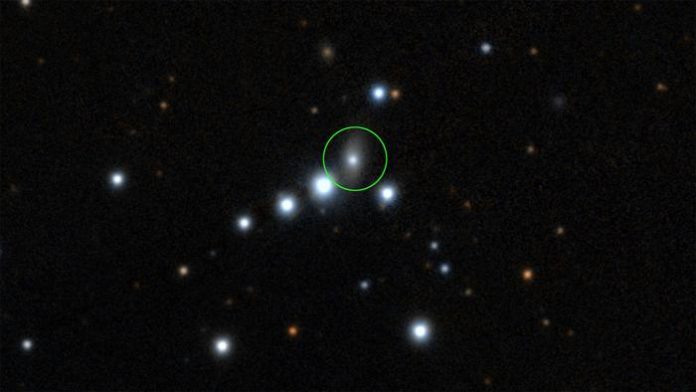For the first time, a large international team of scientists observed a phenomenon that astronomers had never expected to see happen in real time – black hole jets.
The excitement centres on a galaxy about 270 million light-years away from Earth in Draco’s constellation called 1ES 1927+654. For many years, scientists have classified it as an ‘active galactic nucleus’, meaning it has an active black hole at its centre.
This particular black hole was adding material at a slow rate—until it wasn’t.
In 2018, the black hole first made news when it suddenly increased its activity exponentially. Over the course of a few months, it dramatically increased the rate at which it consumed material and became over 100 times brighter in the visible light spectrum.
A shift like that was once thought to take far longer than a human lifetime, from thousands to millions of years.
Since then, scientists have been observing it closely for any additional interesting phenomena.
The first observation of black hole jets
After the major increase in activity began in 2018, which included nearly a year of extremely high levels of X-ray emission, the black hole quieted down again by 2020—only to dramatically increase its output again in 2023.
At that time, it began emitting radio waves at 60 times the previous intensity over just a few months, behaviour which has never been monitored in real time for a supermassive black hole.
Some of the highest-resolution imaging of radio frequency emissions was collected using a technique called Very Long Baseline Interferometry (VLBI). It clearly shows a pair of oppositely directed plasma jets forming near the black hole and expanding outward over the course of 2023 – 2024.
Among its other unusual behaviour, this is the first-ever observation of black hole jets in real time.
Switching on in real time
Sometimes, black hole jets can reach huge scales well outside the host galaxy and affect the number of stars that are forming.
Figuring out how the jets work is very important for understanding the big picture of how the universe and galaxies evolved.
“We have very detailed observations of a radio jet ‘turning on’ in real time, and even more exciting are the VLBI observations, which clearly show these plasma blobs moving out from the black hole,” explained Eileen Meyer, associate professor of physics at UMBC who led the study.
“That shows us that this really is an outflow jet of plasma that’s causing the radio flare. It’s moving at likely 20-30% of the speed of light originating very near a black hole.”
Understanding where the phenomenon came from
The newborn black hole jets coming from 1ES 1927+654 are relatively small compared to the massive jet structures in some of the most powerful AGNs.
Some data suggested that the 2018 flare could have been caused by a tidal disruption event, in which a large object like a star or cloud of gas gets too close to an inactive black hole and artificially brightens it for just a few years.
While the largest plasma jets extend well beyond their host galaxies and last millions of years, scientists are gaining an understanding of a new class of smaller, shorter-lived jets called ‘compact symmetric objects’.
Meyer believes the data in this case point most strongly to the birth of a new CSO. One recent hypothesis is that jets in CSOs are qualitatively different from the very large and long-lived jets seen elsewhere.
This perhaps represents a single ingestion of a star or a gas cloud – a single tidal disruption event happens and powers this short-term jet for around 1,000 years.
Questions remain, but today, there are many promising models of how black holes produce jets.
The next steps will include working with theorists to understand how the data from this study can help test and refine those models.









